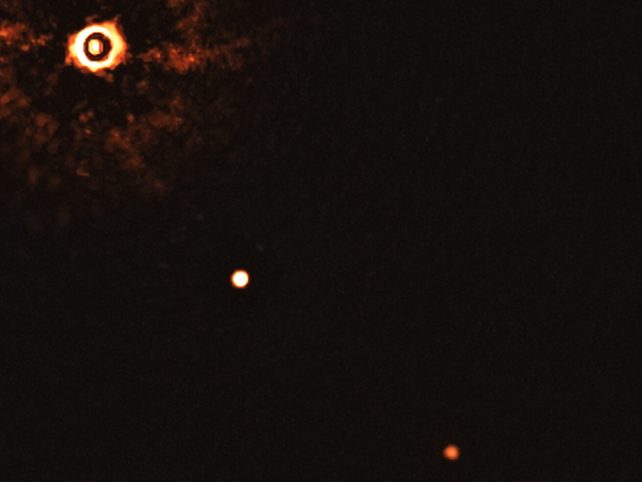Researchers have released the first ever picture of a solar system like our own – a Sun-like star, orbited by multiple exoplanets.
Scientists using the Very Large Telescope at the European Southern Observatory have captured the very first image of a multi-planet system that revolves around a star much like our own Sun. It’s a huge achievement and one that could help teach us more about how planetary systems like our own form and evolve over time.
The system is called TYC 8998-760-1 and it’s located roughly 300 light-years from Earth. That’s a relatively short distance, all things considered, and it’s close enough that astronomers were able to capture images of not only the star at its center but also a pair of massive exoplanets that are orbiting it.
“Even though astronomers have indirectly detected thousands of planets in our galaxy, only a tiny fraction of these exoplanets have been directly imaged,” Matthew Kenworthy, co-author of the research, said in a statement. “Direct observations are important in the search for environments that can support life.”
The star at the heart of the system is like a young version of our own Sun, but the planets orbiting it are a far cry from Earth. The planets are gas giants akin to Jupiter, seen glowing brightly in the image while the star sits in the upper left corner of the image. But while the planets may be gassy like Jupiter, they’re orbiting at much more extreme distances.
A press release announcing the discovery explains:
The two gas giants orbit their host star at distances of 160 and about 320 times the Earth-sun distance. This places these planets much further away from their star than Jupiter or Saturn, also two gas giants, are from the sun; they lie at only five and 10 times the Earth-sun distance, respectively. The team also found the two exoplanets are much heavier than the ones in our solar system, the inner planet having 14 times Jupiter’s mass and the outer one six times.
Capturing images of other planetary systems is vital if we want to better understand our own. With just data point — our own solar system — there’s only so much we can assume to know. Observing other systems, especially in an immature state, offers us a glimpse at how these collections of planets appear and change over time.















